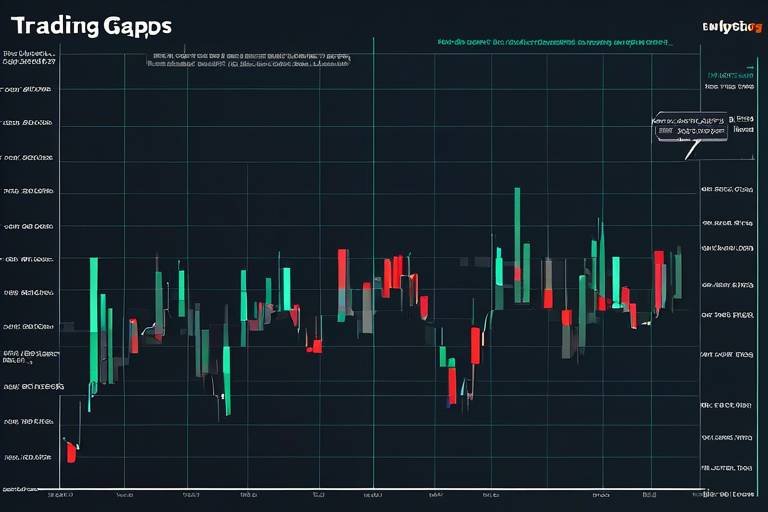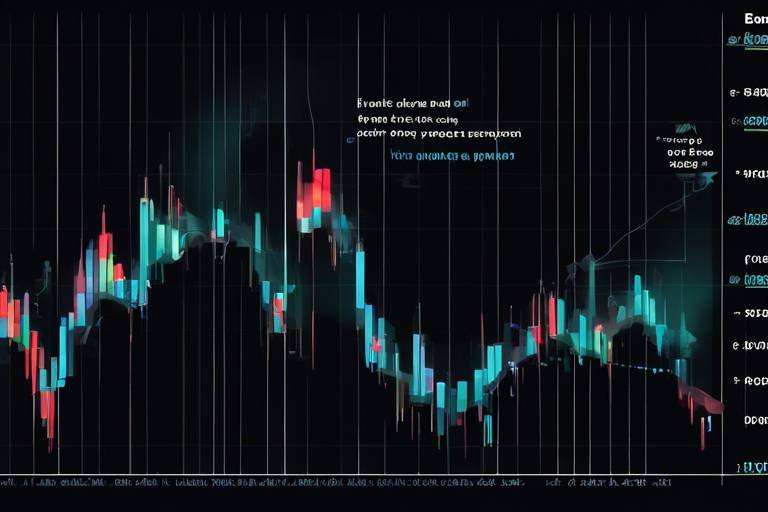How to Analyze the Effectiveness of Your Trading Strategy
In the fast-paced world of trading, having a solid strategy is just the beginning. The real challenge lies in analyzing its effectiveness. Without proper evaluation, even the best strategies can falter. So, how do you determine if your trading approach is hitting the mark? This article will guide you through various methods to assess your trading strategy, focusing on essential performance metrics, the importance of backtesting, and how to make necessary adjustments to boost both profitability and risk management.
Performance metrics are the backbone of assessing any trading strategy. Think of them as the scorecard that tells you how well you're playing the game. Key metrics include return on investment (ROI), win rate, and maximum drawdown. Each of these metrics provides critical insights into your trading performance:
- Return on Investment (ROI): This metric shows the percentage gain or loss relative to your initial investment. A high ROI indicates a successful strategy.
- Win Rate: This is the ratio of winning trades to total trades. A higher win rate suggests a more effective strategy.
- Maximum Drawdown: This measures the largest drop from a peak to a trough during a specific period. Understanding drawdown helps manage risk effectively.
By keeping a close eye on these metrics, you can gauge the effectiveness of your trading strategy and make informed decisions moving forward.
Backtesting is like a time machine for traders. It allows you to apply your trading strategy to historical data and see how it would have performed in the past. This process is essential for evaluating the potential effectiveness of your strategy under various market conditions. But not all backtesting is created equal; the accuracy of your results hinges on several factors.
When it comes to backtesting, the data you choose is paramount. Selecting appropriate historical data ensures that your backtest results are relevant and reliable. Consider the following:
- Time Frame: Different strategies may perform better in specific time frames. Make sure to choose a time frame that aligns with your trading style.
- Market Conditions: Ensure the historical data reflects the market conditions you expect to encounter in the future.
By carefully selecting your historical data, you can enhance the reliability of your backtesting results.
Using high-quality data sources is crucial. Imagine trying to build a house on a shaky foundation; it simply won’t hold up. Traders should seek reputable providers that offer accurate and complete historical datasets. This will ensure that your backtesting reflects true market behavior.
The timeframe you choose for backtesting can significantly influence your results. A strategy might look great on a daily chart but falter on an hourly one. Therefore, it’s wise to analyze multiple timeframes to get a comprehensive understanding of your strategy’s performance across different market conditions.
Once you have your backtest results, interpreting them requires a keen eye. It’s not just about the numbers; you need to analyze performance metrics in the context of market conditions. Identify strengths and weaknesses within your strategy, and don’t shy away from making adjustments based on your findings. This analysis is crucial for making informed decisions about the future of your trading approach.
Adjusting your trading strategy is not just a good idea; it’s essential for improvement. Markets are dynamic, and what worked yesterday might not work today. Regularly evaluating your results and adapting your approach based on changing market dynamics and personal goals can significantly enhance your trading success.
To improve, you must first identify weaknesses in your trading strategy. Analyzing losing trades can reveal patterns that indicate where adjustments are necessary. Think of it like tuning a musical instrument; minor adjustments can lead to a much sweeter sound.
Finally, incorporating new market information and trends can greatly enhance your trading strategy. Staying informed allows you to adapt your approach to current conditions, improving your overall effectiveness. It’s like having a compass; it helps you navigate the ever-changing landscape of the trading world.
Q: How often should I backtest my trading strategy?
A: It's advisable to backtest your strategy regularly, especially after significant market changes or after making adjustments to your approach.
Q: What is the best way to track my performance metrics?
A: Using trading journals or specialized software can help you track and analyze your performance metrics effectively.
Q: Can I rely solely on backtesting for my trading strategy?
A: While backtesting is crucial, it should be complemented with live trading and ongoing analysis to ensure your strategy remains effective.

Understanding Performance Metrics
This article explores various methods for evaluating trading strategies, providing insights into performance metrics, backtesting, and adjustments to enhance profitability and risk management.
When it comes to trading, understanding performance metrics is like having a roadmap for your journey. These metrics help you navigate the often turbulent waters of the market, providing essential insights into how well your strategy is performing. Think of them as the vital signs of your trading strategy; without them, you’re essentially flying blind. Key performance metrics include return on investment (ROI), win rate, and maximum drawdown. Each of these metrics plays a crucial role in gauging the effectiveness of your trading approach.
Return on Investment (ROI) is perhaps the most straightforward metric. It measures the profitability of your trades relative to the amount invested. A higher ROI indicates that your trading strategy is generating more profit from each dollar invested, which is obviously a good thing! For example, if you invested $1,000 and made a profit of $200, your ROI would be 20%. This metric not only helps you assess past performance but also guides future investment decisions.
Next up is the win rate, which tells you the percentage of trades that were profitable. It’s calculated by dividing the number of winning trades by the total number of trades taken. For instance, if you executed 100 trades and 55 were winners, your win rate would be 55%. A high win rate can be comforting, but it’s important to remember that it doesn’t tell the whole story. A strategy with a high win rate but low ROI might still be less effective than one with a lower win rate but higher returns.
Lastly, we have maximum drawdown, which measures the largest peak-to-trough decline in the value of your trading account. It’s a crucial metric because it helps you understand the risk associated with your trading strategy. A high maximum drawdown might indicate that while your strategy can generate profits, it also exposes you to significant losses. For instance, if your account value dropped from $10,000 to $7,000, your maximum drawdown would be 30%. Keeping your drawdown in check is vital for long-term success, as it can impact your emotional and financial stability.
| Performance Metric | Description | Importance |
|---|---|---|
| Return on Investment (ROI) | Measures the profitability of your trades. | Indicates how effectively capital is being utilized. |
| Win Rate | Percentage of winning trades. | Helps gauge the effectiveness of the trading strategy. |
| Maximum Drawdown | Largest decline from a peak to a trough. | Indicates the risk and volatility of the trading strategy. |
In summary, understanding these performance metrics is not just about crunching numbers; it’s about gaining a deeper insight into your trading strategy's effectiveness. They can help you make informed decisions, adjust your approach, and ultimately improve your profitability. So, the next time you evaluate your trading strategy, remember to pay close attention to these key metrics. They might just be the difference between a successful trade and a missed opportunity!
- What is the most important performance metric? While all metrics are important, ROI is often considered the most critical as it directly reflects profitability.
- How often should I evaluate my performance metrics? Regular evaluation, such as monthly or quarterly, can help you stay on top of your strategy's effectiveness.
- Can I improve my win rate without changing my strategy? Yes, by refining your entry and exit points, you may increase your win rate without overhauling your entire strategy.

Backtesting Your Strategy
Backtesting is an essential component of developing a successful trading strategy. It involves simulating your trading approach on historical data to see how it would have performed in various market conditions. Imagine you’re a chef trying out a new recipe; you wouldn’t serve it to guests without tasting it first, right? In the same way, backtesting allows traders to "taste" their strategies before risking real capital. It provides valuable insights into the potential effectiveness of a strategy and helps traders identify possible pitfalls.
When embarking on the backtesting journey, one of the first steps is to select the appropriate historical data. This is akin to choosing the right ingredients for your dish. If you use stale or low-quality ingredients, the final product won’t turn out well. Similarly, if the data you use for backtesting is not relevant or reliable, your results could be misleading. Traders should ensure that the data spans a significant period and includes various market conditions—bull markets, bear markets, and sideways movements—to gain a comprehensive understanding of how the strategy might perform in real-life scenarios.
Choosing the right historical data is vital for accurate backtesting. Traders should consider the following factors:
- Time Frame: The time frame you select can significantly influence your results. Shorter time frames may capture more noise, while longer time frames can provide a clearer picture of trends.
- Market Conditions: Ensure that your data reflects various market conditions. A strategy may perform well in a trending market but poorly in a consolidating one.
- Asset Class: The asset class you are trading should also be taken into account. Different asset classes can have vastly different behaviors.
Once you have selected the right historical data, the next step is to ensure that the data quality is high. Using reputable providers for your historical datasets is essential. This is like sourcing ingredients from a trusted supplier; you want to make sure that the data is accurate and complete. Inaccurate data can lead to erroneous conclusions, and that’s the last thing any trader wants.
High-quality data sources are crucial for reliable backtesting. Traders should look for data that is comprehensive and has been adjusted for dividends, stock splits, and other corporate actions. Many traders prefer using platforms that provide historical data along with backtesting tools, as this can save time and ensure consistency in analysis. Additionally, always check for user reviews or testimonials regarding the data provider to ensure that you are making a sound choice.
Another critical aspect of backtesting is the timeframe you choose. The timeframe can greatly impact your results. For instance, a strategy that appears profitable on a daily chart may not perform well on an hourly chart, and vice versa. Therefore, it’s wise to analyze your strategy across multiple timeframes. This multi-faceted approach can help you understand how your strategy behaves under varying conditions and can identify optimal entry and exit points.
Once you have completed the backtesting process, the next step is to interpret the results. This is where the real magic happens! Analyzing performance metrics, such as the win rate, return on investment, and maximum drawdown, will provide insights into the strengths and weaknesses of your strategy. For instance, a high win rate might be appealing, but if the average loss is significantly larger than the average win, you might need to rethink your approach. It’s all about finding that balance and making informed decisions based on the data.
In conclusion, backtesting your trading strategy is not just a box to tick; it’s a fundamental process that can lead to greater profitability and risk management. By carefully selecting historical data, ensuring its quality, considering various timeframes, and interpreting results wisely, traders can significantly enhance their chances of success in the dynamic world of trading.
Q1: How long should I backtest my trading strategy?
A1: The duration of backtesting depends on the strategy and the market conditions. Generally, a minimum of five years of historical data is recommended for robust results.
Q2: Can I use backtesting results to guarantee future performance?
A2: No, backtesting can provide insights based on historical data, but it cannot guarantee future performance due to the unpredictable nature of markets.
Q3: What are some common mistakes to avoid during backtesting?
A3: Common mistakes include using poor quality data, overfitting the model to past data, and not considering transaction costs and slippage.

Choosing the Right Historical Data
When it comes to backtesting your trading strategy, is like picking the right ingredients for a gourmet meal; it can make or break your results. The quality and relevance of the data you use will significantly influence your backtest outcomes. So, how do you ensure you’re selecting the best data? First, you need to consider the time frame of the historical data. Are you looking at daily, weekly, or even minute-by-minute data? Each time frame can tell a different story, and understanding your strategy's intended trading style is crucial. For instance, if your strategy is designed for day trading, using monthly data may lead to misleading conclusions.
Next, you need to evaluate the market conditions during the time period you're analyzing. Markets are dynamic and can change due to various factors such as economic events, geopolitical tensions, or even shifts in trader sentiment. Therefore, it’s essential to choose a period that includes different market conditions. This will help you understand how your strategy performs not just in a bull market, but also in bear markets or sideways movements. For example, a strategy that works well during a bull market may completely falter in a bearish scenario.
Additionally, you should focus on the data source. Using reliable and reputable data providers is paramount. Poor quality data can lead to inaccurate backtesting results, which in turn can mislead your trading decisions. Look for providers that offer comprehensive datasets, including historical prices, volume, and other relevant metrics. Some popular sources include financial news websites, brokerage platforms, and specialized data vendors. Always verify the integrity of the data you receive, as even the smallest inaccuracies can skew your results.
To summarize, here are some key points to remember when choosing historical data for backtesting:
- Time Frame: Match the time frame to your trading strategy.
- Market Conditions: Ensure the data covers various market scenarios.
- Data Source: Use reputable providers to guarantee data quality.
By carefully selecting the right historical data, you set a solid foundation for your backtesting process. This not only enhances the reliability of your results but also equips you with the insights necessary to refine your trading strategy. Remember, in trading, just like in life, the right choices can lead to greater success!

Data Quality and Sources
When it comes to backtesting your trading strategy, the quality of data you use can make or break your results. Imagine trying to navigate through a foggy landscape; without clear visibility, you’re bound to take wrong turns. Similarly, if your historical data is inaccurate or incomplete, your backtesting results will lead you astray. Therefore, it's crucial to source high-quality data from reputable providers that ensure accuracy and completeness.
There are several factors to consider when evaluating data quality:
- Accuracy: The data must reflect actual market conditions. If it’s flawed, your analysis will be as well.
- Completeness: Ensure you have all necessary data points. Missing data can skew results and lead to incorrect conclusions.
- Timeliness: The data should be up-to-date. In trading, even a few minutes can make a significant difference.
- Consistency: Look for data that is consistently formatted and sourced to avoid discrepancies during analysis.
Some popular sources for high-quality trading data include:
| Data Source | Description |
|---|---|
| Bloomberg | Provides comprehensive financial data and analytics. |
| Yahoo Finance | A free source for historical stock price data and financial news. |
| Quandl | Offers a wide range of financial, economic, and alternative datasets. |
| Interactive Brokers | Provides a trading platform with access to historical market data. |
By choosing data from these reputable sources, traders can enhance the reliability of their backtesting results. However, it's not just about where you get your data; it's also about how you use it. Be sure to continuously validate and cross-reference your data to ensure your trading strategy is built on a solid foundation. The more reliable your data, the more confidence you can have in your trading decisions.

Timeframe Considerations
When it comes to backtesting your trading strategy, play a pivotal role in determining the effectiveness of your approach. The timeframe you choose can significantly influence your results, much like the lens through which you view a landscape. A short-term trader might see a bustling city, while a long-term investor might perceive a sprawling countryside. Hence, understanding various timeframes is essential for a comprehensive evaluation.
First and foremost, it’s crucial to recognize that different timeframes can yield varying results. For instance, if you’re analyzing a strategy on a daily chart, you might see different performance metrics than if you were using a weekly chart. This discrepancy arises because market conditions fluctuate over different periods, affecting price movements and trends. Therefore, testing your strategy across multiple timeframes can provide a more balanced perspective, revealing how it performs under various conditions.
Here’s a breakdown of some common timeframes and their characteristics:
| Timeframe | Typical Use | Advantages | Disadvantages |
|---|---|---|---|
| 1-Minute | Scalping | Quick trades, potential for high frequency | High stress, requires constant monitoring |
| 5-Minute | Day Trading | More manageable than 1-minute, still quick | Can miss longer-term trends |
| Daily | Swing Trading | Less noise, clearer trends | Slower feedback on strategy performance |
| Weekly | Position Trading | Long-term trends, less frequent trading | Requires patience, potential for missed opportunities |
As illustrated in the table above, each timeframe serves a distinct purpose and caters to different trading styles. It's essential to align your strategy with the appropriate timeframe that resonates with your trading goals and risk tolerance. For instance, if you thrive on quick decision-making and rapid trades, a shorter timeframe might suit you best. Conversely, if you prefer to take a step back and observe broader market movements, longer timeframes may be more suitable.
Moreover, when backtesting, consider the market conditions that were prevalent during the chosen timeframe. Were there significant events or trends that could have influenced price movements? By analyzing these factors, you can gain insights into how your strategy might perform in similar future scenarios. This evaluation not only enhances your understanding but also helps in refining your strategy for better results.
In conclusion, the importance of timeframe considerations in trading cannot be overstated. By exploring various timeframes and understanding their implications, you can develop a more robust and adaptable trading strategy. Remember, the market is like a vast ocean, and your timeframe is the vessel that navigates its waves. Choose wisely, and you’ll be better equipped to ride the currents of opportunity.
- What is the best timeframe for trading? The best timeframe varies based on your trading style. Scalpers prefer shorter timeframes, while long-term investors lean towards daily or weekly charts.
- How many timeframes should I analyze? It’s beneficial to analyze at least two to three timeframes to understand your strategy’s performance from different perspectives.
- Can I use the same strategy across different timeframes? Yes, but be prepared to adjust your parameters and risk management techniques based on the specific characteristics of each timeframe.

Interpreting Backtest Results
Once you've completed the backtesting process, the real challenge begins: interpreting the results. It's not just about seeing a number; it's about understanding what that number means for your trading strategy. You need to delve deeper into the performance metrics you've collected to get a clearer picture of how your strategy would have fared in real market conditions. Think of it like analyzing a sports game—you don’t just look at the final score; you examine the plays, the players' performance, and the overall strategy used throughout the game.
When interpreting backtest results, you should focus on several key performance metrics:
- Return on Investment (ROI): This tells you how much profit you could have made compared to your initial investment. A higher ROI indicates a more effective strategy.
- Win Rate: This metric shows the percentage of trades that were profitable. A high win rate might seem appealing, but it’s essential to consider the size of the wins compared to the losses.
- Maximum Drawdown: This figure represents the largest peak-to-trough decline in your portfolio. Understanding drawdown is crucial because it reveals the risk involved in your strategy.
As you analyze these metrics, it’s important to look at them in context. For instance, a strategy with a high win rate but a significant maximum drawdown may not be sustainable in the long run. You could be winning often, but when you lose, the losses could wipe out several profitable trades. Therefore, comparing these metrics against each other is vital for a comprehensive understanding.
Moreover, don’t forget to consider the market conditions during the backtesting period. Was the market trending, or was it more volatile? If your strategy performed well in a bull market but poorly in a bear market, you may need to adjust your approach to account for varying market conditions. This kind of analysis can help you identify potential weaknesses in your strategy and areas for improvement.
In addition to performance metrics, visualizing your results can provide valuable insights. Using graphs and charts can help you quickly identify trends and anomalies. For instance, a simple line graph showing your equity curve over time can reveal periods of significant drawdown or consistent growth. This visual representation can make it easier to communicate your findings with others, whether they are partners or fellow traders.
Lastly, always remember that backtesting is not a guarantee of future performance. The market is influenced by countless variables that can change rapidly. Therefore, while backtest results are essential for refining your strategy, they should be viewed as part of a broader trading plan that includes ongoing analysis and adaptation. The goal is to create a strategy that is resilient and adaptable to changing market conditions.
- What is backtesting? Backtesting is the process of applying a trading strategy to historical data to evaluate its potential effectiveness.
- How important are performance metrics? Performance metrics are crucial as they help assess the success of a trading strategy and guide necessary adjustments.
- Can I trust backtest results? While backtest results can provide valuable insights, they are not foolproof and should be considered alongside other market analyses.

Adjusting Your Trading Strategy
Adjusting a trading strategy is not just a good idea; it's essential for improving performance in the ever-changing landscape of financial markets. Think of your trading strategy as a living organism—it needs to adapt, grow, and evolve to survive. Regular evaluation of your results is crucial, as it allows you to identify what works and what doesn’t. This is particularly important in today’s fast-paced trading environment, where market dynamics can shift overnight.
First and foremost, identifying weaknesses in your strategy is a key step in the adjustment process. This isn't just about looking at your losses; it's about diving deep into your losing trades to uncover patterns or recurring mistakes. For instance, if you notice that a particular setup consistently leads to losses, it might be time to either refine that setup or eliminate it altogether. By conducting a thorough analysis, you can pinpoint specific areas that need improvement, leading to better outcomes in the future.
Moreover, it’s vital to incorporate new information into your trading strategy. The markets are influenced by countless factors, including economic indicators, geopolitical events, and market sentiment. Staying informed about these elements can give you valuable insights that help you adapt your trading approach. For example, if a new economic report indicates a shift in consumer behavior, you might want to adjust your strategy to account for this change. By remaining flexible and responsive, you can enhance the effectiveness of your trading strategy.
To illustrate how adjustments can be made, consider the following table that outlines common weaknesses and potential adjustments:
| Weakness | Potential Adjustment |
|---|---|
| High Drawdown | Implement tighter stop-loss orders |
| Low Win Rate | Refine entry and exit criteria |
| Overtrading | Set a maximum number of trades per day |
| Lack of Adaptability | Regularly review and update strategy based on market conditions |
It's also important to remember that adjustments should not be made impulsively. Instead, consider implementing changes gradually and monitor their impact over time. This way, you can determine what works and what doesn’t without overwhelming yourself with too many changes at once. Think of it as tuning a musical instrument; small adjustments can lead to a harmonious outcome.
In conclusion, adjusting your trading strategy is not just about fixing problems but also about enhancing your overall approach to trading. By identifying weaknesses, incorporating new information, and making thoughtful adjustments, you can significantly improve your trading performance. After all, in the world of trading, adaptability is often the key to success.
- How often should I adjust my trading strategy? It's advisable to review your strategy regularly, especially after significant market events or changes in your trading results.
- What should I focus on when identifying weaknesses? Look at your losing trades, the conditions under which they occurred, and any patterns that emerge.
- Can I incorporate new trends into my existing strategy? Absolutely! Staying informed about market trends can help you refine your strategy and improve its effectiveness.
- What if I’m overwhelmed by too many adjustments? Start small. Implement one change at a time and monitor its impact before making further adjustments.

Identifying Weaknesses
Identifying weaknesses in a trading strategy is not just a good practice; it’s a necessity for anyone serious about trading. Think of it like tuning a musical instrument; if you ignore the off-notes, the whole performance suffers. To truly enhance your trading effectiveness, you need to dig deep into your past trades and analyze where things went wrong. This process can be a bit like detective work, where you sift through the evidence to find clues that point to the root of your trading issues.
One of the first steps in identifying weaknesses is to take a close look at your losing trades. By analyzing these trades, you can uncover patterns that may indicate a recurring problem. For instance, do you tend to lose money on trades during specific market conditions? Are there certain stocks or assets where you have a higher failure rate? By pinpointing these areas, you can start to formulate a plan to address them.
Moreover, consider the following aspects when evaluating your trading performance:
- Trade Execution: Were there any delays or mistakes in executing your trades? Slippage can eat into your profits.
- Emotional Decisions: Did emotions cloud your judgment? Trading on fear or greed often leads to poor decisions.
- Market Conditions: Were you trading against the prevailing market trend? Sometimes, the market simply isn’t in your favor.
Additionally, it’s beneficial to keep a trading journal. This journal should not only capture your trades but also your thoughts and feelings during those trades. Over time, you may notice trends in your decision-making process that could reveal weaknesses. For example, if you find yourself frequently second-guessing your strategy, this could indicate a lack of confidence in your approach, which can lead to inconsistent results.
Lastly, don’t hesitate to seek feedback from other traders or mentors. Sometimes, a fresh pair of eyes can spot weaknesses that you might overlook. Engaging with a community of traders can provide valuable insights and alternative perspectives that can help you refine your strategy. Remember, trading is a journey, and continuous learning is key to success.
Q: How often should I evaluate my trading strategy?
A: It’s advisable to review your trading strategy regularly, ideally after a series of trades or at least once a month. This helps you stay aligned with your goals and market conditions.
Q: What tools can I use to analyze my trading performance?
A: There are several trading journals and software available that can help you track your trades, performance metrics, and emotional states. Some popular choices include TraderSync and Edgewonk.
Q: Is it necessary to adjust my strategy after every loss?
A: Not necessarily. It’s important to distinguish between normal fluctuations in trading and significant weaknesses in your strategy. Focus on patterns over time rather than reacting to individual losses.
Q: How can I ensure that I’m learning from my mistakes?
A: Keeping a detailed trading journal and regularly reviewing it can help you learn from your mistakes. Additionally, discussing your trades with other traders can provide new insights.

Incorporating New Information
In the fast-paced world of trading, staying ahead means being adaptable and responsive to new information. The markets are constantly evolving, influenced by a myriad of factors such as economic indicators, geopolitical events, and technological advancements. To truly enhance your trading strategy, it’s essential to integrate fresh insights into your decision-making process. But how can you effectively incorporate this new information?
First, consider establishing a routine for monitoring market news. This could involve subscribing to reputable financial news outlets, following influential analysts on social media, or utilizing market analysis platforms. By regularly consuming high-quality information, you’ll be better equipped to identify trends that may impact your trading strategy. Imagine being a chef who constantly tastes their dish; only by doing so can they adjust the seasoning to perfection. Similarly, as a trader, you must continuously assess the flavor of your market strategies.
Another effective method is to utilize technical analysis tools. These tools can help you interpret new data and visualize changes in market dynamics. For instance, incorporating indicators such as moving averages or the Relative Strength Index (RSI) can allow you to respond quickly to market shifts. The key here is to ensure that your tools are not just collecting dust; they should be actively informing your trading decisions. Think of them as your trading compass, guiding you through the turbulent seas of the market.
Moreover, it’s vital to maintain a flexible mindset. Incorporating new information doesn’t mean you should abandon your core strategy; rather, it’s about refining it. For example, if you notice that a particular stock is reacting strongly to earnings reports, you might adjust your entry and exit points accordingly. This kind of adaptability can be the difference between a profitable trade and a missed opportunity.
Additionally, consider creating a feedback loop where you analyze the outcomes of trades influenced by new information. This could involve documenting your trades, noting what new information prompted your decisions, and reviewing the results. Over time, this practice can reveal patterns that enhance your understanding of how to best incorporate new insights into your trading strategy.
Finally, remember that incorporating new information is not a one-time effort but an ongoing process. As you gather more data and insights, your trading strategy should evolve. Embrace the journey of learning and adapting, and you will find yourself not only surviving but thriving in the ever-changing landscape of trading.
- How often should I update my trading strategy?
Regularly review and update your strategy, ideally after significant market events or changes in your trading environment. - What sources of information are most reliable?
Reputable financial news websites, academic journals, and expert analysts are great sources for reliable trading information. - Can I rely solely on technical analysis?
While technical analysis is valuable, combining it with fundamental analysis and market news often leads to better trading decisions.
Frequently Asked Questions
- What are performance metrics and why are they important?
Performance metrics are essential tools for evaluating how well a trading strategy is performing. They help traders measure key aspects like return on investment (ROI), win rate, and maximum drawdown. Understanding these metrics allows traders to gauge their effectiveness and make informed decisions about their strategies.
- How do I backtest my trading strategy?
Backtesting involves applying your trading strategy to historical market data to see how it would have performed in the past. To do this effectively, you'll need to choose relevant historical data, consider timeframes, and analyze the results carefully. This process helps you understand the potential effectiveness of your strategy before risking real money.
- What factors should I consider when selecting historical data for backtesting?
When selecting historical data for backtesting, it’s crucial to consider the time frame and market conditions. Make sure the data aligns with your trading strategy and reflects the market environment you plan to trade in. Using high-quality data from reputable sources is also vital for accurate results.
- How can I interpret the results of my backtest?
Interpreting backtest results requires a careful look at various performance metrics. You should analyze which trades were successful and which weren't, identifying patterns or weaknesses in your strategy. This analysis helps you understand where improvements can be made to enhance your trading approach.
- What should I do if I identify weaknesses in my trading strategy?
If you find weaknesses in your trading strategy, it’s important to take action. Analyze your losing trades to understand what went wrong and make necessary adjustments. This could involve changing your entry or exit points, refining your risk management, or even incorporating new market information to stay relevant.
- How often should I adjust my trading strategy?
Regularly evaluating and adjusting your trading strategy is key to maintaining its effectiveness. Market conditions change, and so should your approach. It's a good practice to review your performance metrics periodically, especially after significant market events or changes in your trading goals.
- What role does new market information play in adjusting my strategy?
Incorporating new market information is crucial for keeping your trading strategy relevant. Staying updated on market trends, economic indicators, and news events allows you to adapt your strategy accordingly. This responsiveness can significantly enhance your overall trading effectiveness and help you capitalize on new opportunities.



















